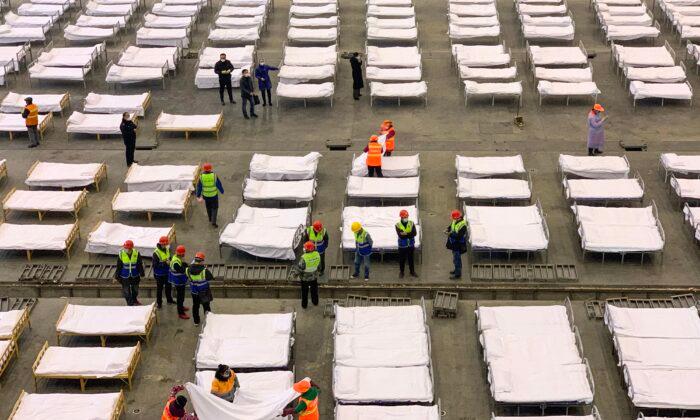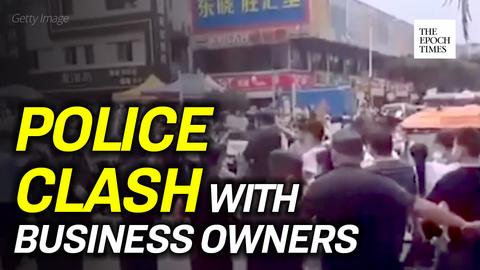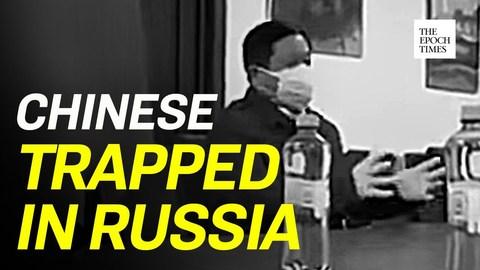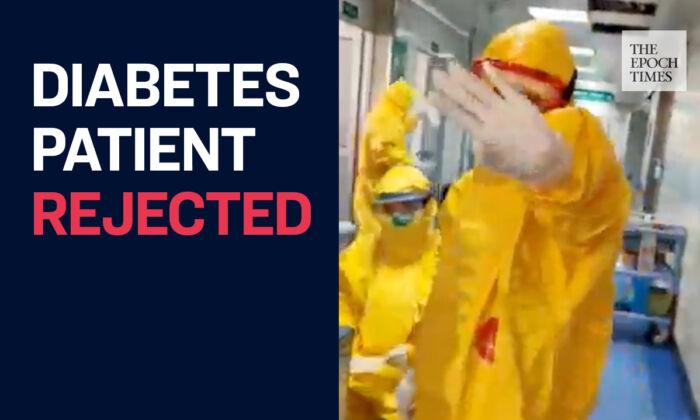Chinese authorities set up a nine-person national coronavirus control team on Jan. 25, which does not include any medical professionals, experts from the National Health Commission, or epidemic control specialists. A scholar pointed out that the goal of this team, comprised only of personnel from the Central Propaganda Department and the Ministry of Public Security, was not to prevent and provide treatment for the epidemic, but to focus on propaganda, arrest people, and block information dissemination.
Team Set Up After the First US Case Appeared
During an interview with the Chinese-language Epoch Times, Professor Tung Li-wen, a China expert and member of Taiwan Think Tank advisory committee, shared his opinion on why Wuhan City (the epicenter of the coronavirus outbreak) was locked down on Jan. 23 and why a national coronavirus control team was established on Jan. 25. Tung believes that once the first COVID-19 case was identified in Seattle on Jan. 21, the Chinese authorities couldn’t “hide elephants in mouse holes” any longer.No Medical Professionals on the Team
According to Tung, of the nine members on the team, the leader is Li Keqiang, premier of the State Council, and the deputy leader is Wang Huning, China’s propaganda boss. The other members in the group include Ding Xuexiang, director of the General Office; Sun Chunlan, vice premier of the State Council; Huang Kunming, minister of the Publicity Department (formerly known as Central Propaganda Department); Cai Qi, secretary of the Beijing Municipal Party Committee; Wang Yi, foreign affairs minister; Xiao Jie, secretary general of the State Council; and Zhao Kezhi, minister of public security. However, there is no expert from the National Health Commission or any public health specialist in the group.Tung explained that deputy team leader Wang was previously in charge of Communist Party ideology. The former position of another chief leader, Sun Chunlan, was head of the United Front Work Department. The other members came from either the Central Propaganda Department or the Ministry of Public Security.
Tung pointed out that the coronavirus control team was not set up to combat the disease because there were no health authorities or medical experts in such an important leadership group.
“This is not a group for coronavirus control, but a group for politics and publicity, and for precluding popular revolt.”
Tung pointed out that such posturing is a major problem in the Chinese communist system, as well as the biggest problem in the fight against the coronavirus.
In comparison, the epidemic control system and methods in Taiwan are totally different from those of the Chinese Communist Party (CCP). Tung cited an example to illustrate his point.
No Refinements in the Past 17 Years
The first decision made by this national team was to build the Huoshenshan (Fire God Mountain) hospital, Leishenshan (Thunder God Mountain) Hospital, and a number of makeshift hospitals called Fangcang Hospitals, which were all constructed in a short period of time.Fangcang Hospitals were set up in over a dozen stadiums, school gyms, and exhibition centers to isolate patients with mild or moderate symptoms of COVID-19 infection.
Tung explained that the CCP was still using the same epidemic control methodology it adopted 17 years ago. In 2003, the government built a makeshift hospital in 10 days to prove it was capable of controlling the SARS outbreak. This approach was used recently and remains unchanged.
The CCP expected to divert global attention from the messy situation in Wuhan to construction of the hospitals by showing the buildings going up in live videos. It was obvious that almost half of the news coverage on the epidemic focused on the building of Huoshenshan Hospital.
However, the hospital contained only simple and ineffective medical equipment, and was criticized by Chinese netizens as a “death concentration camp.”
Many patients at the Fangcang hospitals have posted videos online showing the poor environment and pleading for help from those outside. In these videos, patient beds were closely lined up with no curtains for physical separation; those who arrived late had to sleep on the floor; it was even difficult to use the restroom and bathroom; and meals couldn’t be guaranteed. Moreover, there are no doctors, only nurses.
Tung stated that next, a few “model wards” might be constructed and showcased internationally as being equipped with ECMO machines (extracorporeal membrane oxygenation, used to rescue critically ill patients) and other medical equipment needed in negative pressure isolation wards.
On the other hand, the number of beds in Huoshenshan Hospital and Leishenshan Hospital add up to no more than 2,400 even though there are at least 100,000 confirmed cases in Wuhan.
“It is still a big problem as to who will be selected to go to the hospital for diagnosis and treatment. The whole process is a war of publicity, not a war against the contagion,” Tung said.
“Such concentration-camp style hospitals were not constructed for treating an epidemic at all. Patients are placed in close proximity and are left to die. This indicates that the CCP governance is facing total collapse.”





Friends Read Free